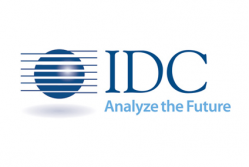The Europe, Middle East, and Africa (EMEA) traditional PC market (desktops, notebooks, and workstations) continued to stabilize in the first quarter of 2017, with the market posting modest growth (1.6%) and totaling 17.4 million units, according to International Data Corporation (IDC).
Notebooks performed strongly across EMEA (8.9% YoY), growing 9.2% in Western Europe and 8.3% in CEMA. The push to avoid price increases following component shortages and the inventory build-up in Western Europe, together with favorable exchange rates against the dollar in CEMA, fueled commercial notebooks, which grew 18.6% in CEMA and 11.2% in Western Europe. Consumer notebooks returned to growth in Central and Eastern Europe (8.1%) and Western Europe (7.5%) thanks to some previous quarter backlogs. Overall desktop shipments continued to decline, posting a 12.0% decrease in EMEA.
“The return to positive territory shows a clear stabilization of the traditional PC market in EMEA. Memory and SSD shortages caused backlogs last year and some shipments could not be fulfilled earlier than 2017Q1. In addition, the channel anticipated demand and increased its stock intake ahead of further device price hikes,” said Andrea Minonne, research analyst, IDC WE Personal Computing. Exchange rate fluctuations and a stronger macroeconomic outlook in mature markets (with the exception of the U.K.) also impacted strongly on PC performance this quarter.
The scenario was highly fragmented in Western Europe, where traditional PCs grew 3.1%. Overall, France and Germany grew 8.2% and 5.8% YoY, while the U.K., as expected, remained in negative territory (-7.9%). Southern European economies, such as Italy (-2.6%) and Spain (-2.8%), were on the way to stabilization. In the commercial space, an anticipation of further price hikes due to exchange rate volatility led vendors and channels to build up inventory with regards to notebooks to serve their customers at the best price. Consequently, notebooks, growing at 11.2% YoY, pushed the entire commercial market upward. Desktops, however, continued to erode. An improved economic outlook in many countries also boosted IT investment. In consumer, after several quarters of decline, the market began to stabilize thanks to a strong notebook performance (7.5% YoY growth). Backlog fulfilment together with the increasing demand for mobile gaming PCs and thin and light solutions boosted results.
“In the first quarter of 2017 the traditional PC market reported healthy annual growth of 4.5% in the CEE region,” said Nikolina Jurisic, product manager, IDC CEMA. “The market was driven by notebooks recording an overall growth of 11.7% YoY. Both consumer and especially commercial segments increased, despite inventories built up at the end of 2016 due to an expected rise in component ASPs. The market was boosted by healthy growth on the back of a depressed 2016Q1 result, some backlog from the previous quarter, further recovery in the eastern CEE region, and stabilization in exchange rates for local currencies against the dollar. A lack of deals continued to inhibit growth in the desktop market, which reported a decline of 7.7% YoY. On the other hand, the MEA traditional PC market continues to decline, at 6.2% YoY. The notebook market grew by 5.1% YoY despite the ongoing market slowdown and the consumer spending skewed toward detachable tablets and mobile phones. A few large education deals contributed to overall regional growth in the notebook space.”
Vendor Highlights
Traditional PC market consolidation is progressing, and the share of the top 5 vendors continued to grow in 2017Q1. The top 5 players accounted for 77.4% of the total market volume compared with 74.1% in 2016Q1.
- HP Inc. reinforced its leadership, gaining share (25.7%) and growing 4.4% YoY. Gains in the consumer notebook space helped boost performance.
- Lenovo maintained share (20.6%) and grew 1.4% YoY, mainly driven by double-digit growth in commercial notebooks, where the company is reinforcing its position.
- Dell posted solid growth (9.8%) and increased its market share (12.0%) thanks to strong commercial notebook results.
- Acer Group experienced a stark 35.1% growth, strengthening its position (9.8% share) after a challenging 2016Q1.
- ASUS faced challenges related to competitive notebook price pressure and inventory but the company is consolidating its position in the consumer space in MEA.
Top 5 Vendors: Europe, the Middle East, and Africa (EMEA) Traditional PC Shipments*
2017Q1 (Preliminary) (000 Units)
|
Vendor |
2016Q1 Shipments |
2017Q1 Shipments |
2016Q1 Share |
2017Q1 Share |
YoY Growth |
|
HP Inc. |
4,288 |
4,478 |
25.0% |
25.7% |
4.4% |
|
Lenovo |
3,539 |
3,587 |
20.7% |
20.6% |
1.4% |
|
Dell |
1,900 |
2,086 |
11.1% |
12.0% |
9.8% |
|
Acer Group |
1,258 |
1,699 |
7.3% |
9.8% |
35.1% |
|
ASUS |
1,712 |
1,617 |
10.0% |
9.3% |
-5.6% |
|
Others |
4,436 |
3,939 |
25.9% |
22.6% |
-11.2% |
|
Total |
17,133 |
17,406 |
100.0% |
100.0% |
1.6% |
Source: IDC EMEA Quarterly PCD Tracker, Preliminary Results, 2017Q1, April 2017
Table Notes:
• Some IDC estimates were made prior to financial earnings reports.
• Shipments include shipments to distribution channels or end users. OEM sales are counted under the vendor/brand under which they are sold.
• Traditional PCs include desktops, notebooks, and workstations, and do not include tablets or x86 servers. Detachable tablets and slate tablets are part of the Personal Computing Device Tracker, but are not addressed in this press release.
• Data for all vendors is reported for calendar periods.

